Everyone I know who visits Tikal flies via Guatemala City, but we decided to drive. On the way, we visited parts of Guatemala we’d read and heard about–Rio Dulce, Lake Izabel, and Livingston—and saw miles of near-desert and dense jungle vastly different from the familiar mountains and valleys of the country’s west and center.
Our group consisted of my children, fourteen-year-old Olivia, eleven-year-old Mateo, and I, along with good friends from our Bay Area adoption group, Michele S. and her ten-year-old daughter, Sofia. We hired a driver, Helmuth Leal, who owns the Antigua travel company, Caminos del Quetzal. Literally dozens of tour companies and shuttles run trips to Tikal. We chose Helmuth based on recommendations of others in our adoption community. The service he provided was terrific.
Guatemala is divided into twenty-two regions called departments, similar to our States, and enroute to Tikal we passed through nine of them: Solola, Sacatepequez, Chimaltenango, Guatemala, Progresso, Zacapa, Izabel, and Peten. Tkal is located in the middle of Peten, the largest and most northwestern department, bordering Mexico to the north and west and Belize to the East. The distance from Guatemala City is about three hundred thirty miles. We started our trip in Panajachel, which added another hundred.
The trip took six days, with two days dedicated to driving. The cost was about twice as much as the price of five people flying round trip from Guatemala City to Flores, Tikal’s nearest airport. Bear in mind, the price included hotels, transport, and Tikal Park admission.
Before leaving for Tikal, our families had spent a week at Lake Atitlan, and Helmuth picked us up there on Sunday at 6 AM. If I were to do it again, to save travel time, I would start in Antigua. Lesson learned. We stopped for breakfast at the restaurant Chichoy, between Lake Atitlan and Antigua, and snacked in the van until we arrived almost at Rio Dulce. I say almost, because it was while on the road that we learned the meaning of the word pinchazo—flat tire. The incident added to the adventure.
Once in Rio Dulce, we unloaded our luggage onto a riverboat and cruised over to the rustic and charming Hotel Catamaran. The cabins were simple and clean, with ceiling fans we grew to cherish—that part of the country is hot! and humid!–and no internet access. The no-internet theme was repeated for the rest of the week, and for the first time I could remember, I truly felt off the grid.
The next morning, we hopped on a small boat with Helmuth and cruised miles and miles to the mouth of Rio Dulce. After a short detour to take pictures of a centuries-old Spanish fortress, Castillo de San Felipe, we were immersed in a lush landscape of mangrove trees, colorful birds, thatched roofs, and dug-out canoes. We stopped a hot springs where we feasted on rolls seasoned with local coconut and dipped in the healing waters. A local shaman asked if we suffered pain anywhere, and I pointed to my knees. The shaman instructed me to sit on the dock, rubbed sulfur mud between his hands, and gave me a deep-tissue massage on par with any I’ve received in the States. Two weeks later, my knees still feel better.
Midway down the river, two children sailed up beside us in a wooden canoe and sold us handmade baskets. We also stopped to tour the Ak’ Tenamit school, which was founded by an American expat for some four hundred students from the surrounding region to study the hospitality industry. Our final destination was the town of Livingston, with a Caribbean feel and home of Guatemala’s indigenous Garifuna, descended from people from Africa by way of Belize. For lunch, we dined on fish soup at Bucamama, the restaurant managed by students studying at Ak’ Tenamit.
We returned to Hotel Catamaran as the early evening rain was starting. We dined on pizza in the Catamaran restaurant—our only option—with a friendly group of tourists from Holland. The pizza was amazingly delicious.
After a hearty breakfast of eggs, bacon, and tortillas, we loaded back into Helmuth’s van for the final leg of our drive to Tikal. Midway, we stopped for refreshments in the town of Poptun, the training ground for Guatemala’s elite soldiers, the Kaibiles. We also used the ATM, knowing options were non-existent in Tikal.
We arrived in Tikal in late afternoon, and were greeted at the Park entrance with the distinctive roar of a howler monkey. Helmuth told us we were lucky to hear the roar. In his previous six visits, he hadn’t seen or heard a howler at all. The sound is like a lion. Someone told us the Jurassic Park dinosaur vocalizations are actually sounds made by howler monkeys.
Tikal features only three hotels: the Jaguar Inn, known as the backpacker stop; the mid-level Tikal Inn; and the luxury Jungle Lodge. We stayed in the Tikal Inn, which was perfect for us. Casual, inexpensive, good food, and with the essential swimming pool. However, if bugs, newts in your room, and no electricity after 9 PM (meaning no ceiling fans) spell discomfort for you, I recommend you check out the Jungle Lodge.
At this point, we said good-bye to Helmuth and he drove back to Guatemala City. The kids splashed in the pool until dinner, and jumped in again afterward until a drenching downpour produced a swarm of dive-bombing red ants that attacked our faces. For ten minutes that seemed like an hour, we swatted away the bugs like crazy dancers, until they vanished in a cloud as mysteriously as they had appeared.
The next day we toured the ruins with our English-speaking guide. What’s amazing about Tikal—besides the beautiful and impressive pyramids, of course–is that visitors are allowed to climb many of the monuments. The ancient Maya believed that heaven was above the jungle canopy, and after climbing to the top of one pyramid and looking out, I understood why.
When the skies opened again and poured down on us—this is jungle rain, you can’t fight it, you just take shelter until it ends—we learned that palm fronds are called a Mayan umbrella. As we huddled under a roofed snack area, we heard languages from Europe, Asia, the US, and local Mayan idioms.
The Tikal museums are worth visiting. One displays relics, while the other explains the excavation process. A three-dollar ticket will get you into both.
Our final afternoon, a shuttle drove us to Flores, a charming island town on a small lake, Lago Peten Itza. We didn’t leave enough time to explore the Flores museum and zoo, although we wish we had. Immediately upon arrival at our hotel, Casona de la Isla, the kids jumped into the pool. The heat and travel had exhausted us all, and we were content to eat dinner at the hotel and go to sleep in our deep-freeze-level air-conditioned rooms.
After a rushed breakfast the next morning, we hopped into our reserved shuttle and arrived at the airport for our 7 AM flight back to the capital. It seemed we barely were in the air before we landed fifty minutes later in Guatemala City.
For us, the overland journey to Tikal was worth the effort. There was rain, there were bugs, it was hot and it was humid. But we were determined to see more of Guatemala than was visible through an airplane window. And we did.
Tags: adoptive families, adoptive family travel, Caminos del Quetzal, Casona de la Isla, Catamaran Hotel Rio Dulce, departments in Guatemala, drive to Tikal, Flores, Livingston Guatemala, Rio Dulce Guatemala, Tikal, transracial adoption, trip to Guatemala
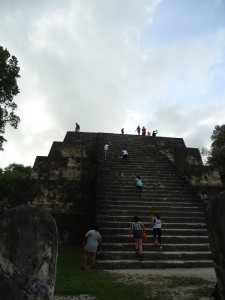
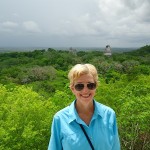
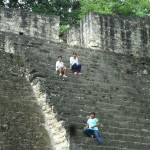
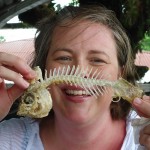
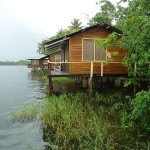



 ShareThis
ShareThis